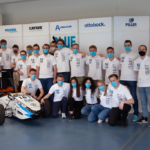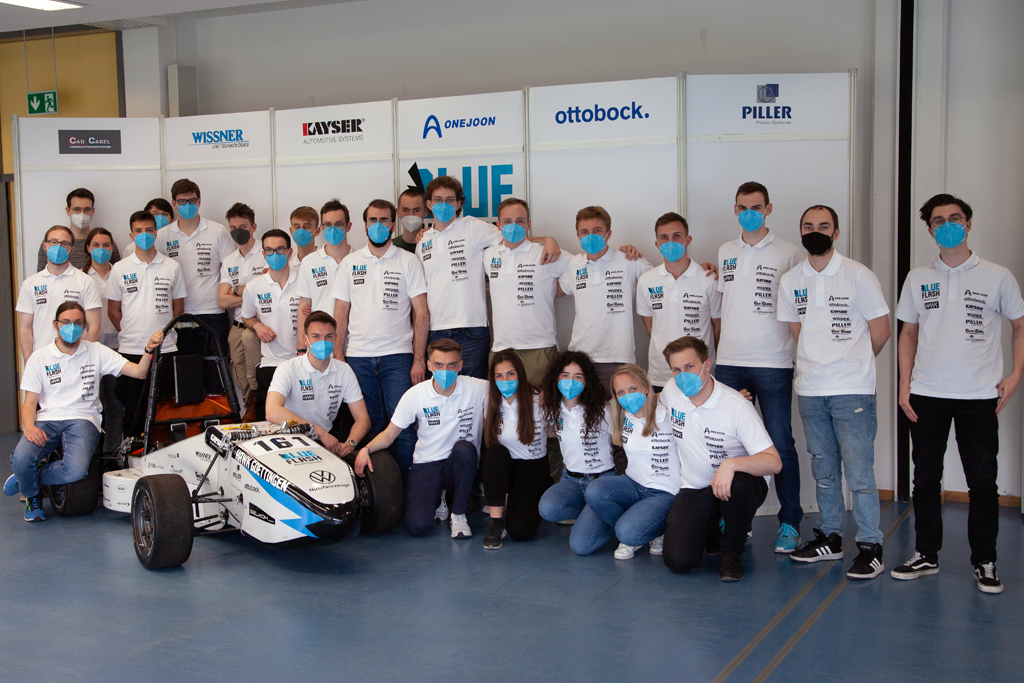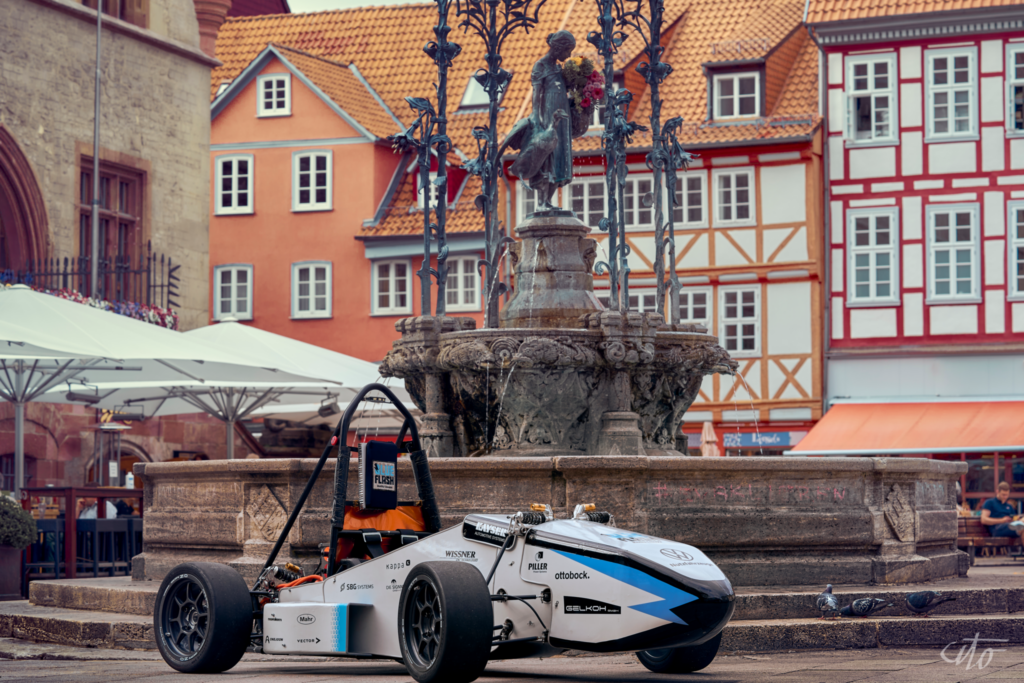Stem training: high-voltage training for the formula student team blue flash



The STEM field is certainly no uncharted territory for two female students of the Formula Student Team Blue Flash. Because the future female engineers, in addition to their studies, are working on a race car which first and foremost has to yield high performance while being safe. To keep working as safely as possible under voltage, the two female team members are furthering their knowledge through a high-voltage training course at VadoTech. What the process of the race car manufacturing looks like and how a high-voltage training course helps is described by the two students in a two-part blog post.
Blue Flash Mobility Concepts is a motorsport team from Göttingen founded in 2015.
Each year the team conceives, designs and manufactures its own electric race car prototype and brings it onto the race track.
However, in contrast to usual motorsport teams, Blue Flush does not consist of numerous experienced engineers but rather of 42 students. The race project is realised by the students during their free time besides their studies. Jonas Antonczyk, team leader during the season 2021/22 said: “Our team members on average work approx. 20 hours per week on this project besides their lectures and thus manage to build a high-performance racing car within only eight months.”
With the self-made electric race car Blue Flash takes part in international competitions every year. The team competes against more than 200 other teams in their class in races against time.
These competitions are run under the umbrella project “Formula Student” where future engineers gain experience in a professional context at an early stage. The Formula Student is an international design competition, divided into the three classes “Combustion”, “Electric” and “Driverless”. Blue Flash has been participating in the Electric class since its team formation. The team has been using high-voltage drives since 2018 with the aim of efficiently exploiting the full 80 kW of power specified by the Formula Student regulations. The 450 V battery required to this purpose is designed and manufactured by the students themselves. Only the Lithium-Polymer cells (LIPO) are bought.

In addition to the performance of the vehicle, the presentation by the students is rated as well. Around one third of the overall ranking consists of the “static disciplines”. The team members present their developments, the costs as well as a fictitiously developed marketing campaign for their car to a jury from the automotive industry.
With a place in the top 15, Blue Flash excelled in both their competitions last season. The students got particularly good results in the Cost Report with a second and fourth place.

Apart from the performance, the subject of safety has been one of the main focuses of the team from the very start. In 2017 the team won a Special Award for the fire extinguisher it had integrated in the battery box – which made it the safest car in the entire competition.
To maintain safety at the highest level even during the development process, the team in 2017 members searched for a partner to support the students in their undertaking. At the beginning of 2018 Blue Flash found the ideal partner in VadoTech’s training centre for the plan of further training in the area of high-voltage safety.
Through targeted further training for the team members to become “Electrical System Officers” (ESOs) the team ensures the best possible safety during the entire development and testing process. The further training is divided into two main fields.
With further training as a skilled person (FHV) of the levels 2E and subsequently 3E according to the guideline DGUV I 209-093 at VadoTech the students achieve a general in-depth understanding of dealing with high-voltage systems and of working with live-components.
In addition, the qualified electrician (vEFK) at the university (HAWK) is already being prepared in corresponding further training to support and train the ESOs in their work.
In a second step the prospective Electrical System Officers are then trained by experienced ESOs in dealing with team-specific working methods and regulations. These then autonomously implement the development of the high-voltage components.
In April 2022 two of Blue Flash’s prospective ESOs, Lea and Lisa, completed the further training to become FHVs and receive the authorisation to work under voltage. Lea said: “Through the training at VadoTech I now have a deeper understanding of the dangers of electric current.” “As a result I now feel secure in working on high-voltage systems which I would not have dared to do beforehand.” Lisa added: “Uwe Rahm, VadoTech’s trainer, underpinned the theoretical parts with good practical examples and spent a lot of time answering individual questions”. In particular working on the Audi Q7 e-tron, which is available in VadoTech’s cutting edge equipped training rooms, helped both of them learn to work safely in a high-voltage environment. Further training participants were also from the STEM field which resulted in an exchange of experience with interesting discussions.
Moritz Borchert, team leader for the season 2020/21, said: “Through the cooperation with VadoTech we have so far always been able to present one of the safest cars at the races.” The team is continuing its cooperation with the training centre. Currently further team members are again participating in a high-voltage training course on-site in Berlin. The second part of the blog post then includes a report on the development process of the race car and what influence the knowledge resulting from the training has on it.
We’re here to help! You can reach out to us by phone at +49 30 327 644 13 or email us at training@vadotech.com. Our team is happy to assist you with any questions.
Get in touch
"*" indicates required fields
You need to load content from reCAPTCHA to submit the form. Please note that doing so will share data with third-party providers.
More Information